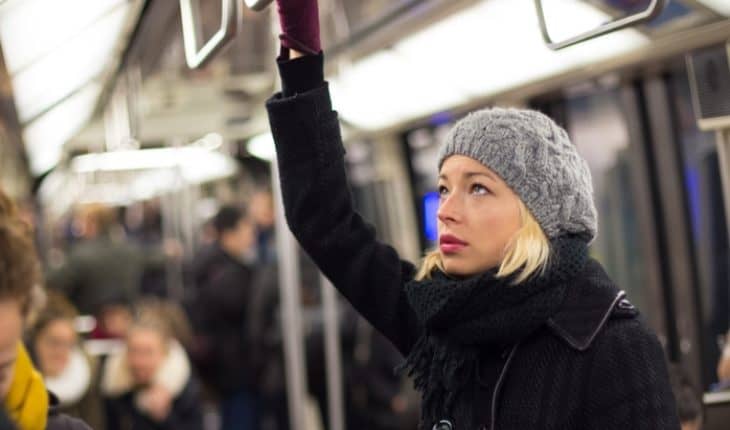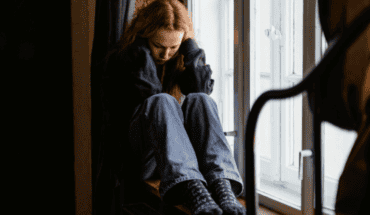A worldwide study of 327,403 metro and bus passengers shows that women are ten per cent more likely to feel unsafe than men on urban public transport.
The study, conducted by Imperial College London on data from 2009 to 2018, looked at a third of a million passenger responses to Customer Satisfaction Surveys (CSSs) from 28 cities across four continents.
They found that on average, women are ten per cent more likely than men to feel unsafe on metro trains (trains that go underground) and six per cent more likely than men to feel unsafe on buses.
The largest difference between women and men’s perceptions of safety was in Europe, where women were 12 per cent more likely to report feeling unsafe than men.
The smallest difference was in South America, where women were nine per cent more likely to report feeling unsafe than men.
The researchers say the findings highlight an important social issue that could be preventing some women from thriving both personally and professionally.
Lead author Laila Ait Bihi Ouali, of Imperial’s Department of Civil and Environmental Engineering, said: “Feeling unsafe can lead to social, professional, economic, and health problems for those affected. In this case, women who feel unsafe on public transport might turn down shift work at certain times of day, or avoid social or work events that require travelling a certain route.”
“Our study was conducted on data from before the coronavirus outbreak, but its message will be just as important when life resumes as normal.”
The results are published today in Journal of the Royal Statistical Society: Series A.
Safety and satisfaction
Public transport operators send online CSSs every year to passengers that are designed to measure general feelings of satisfaction with their networks. The surveys ask passengers their level of agreement with various statements about availability, time, information, comfort, security, customer care, accessibility, environment, and overall satisfaction.
The response options are usually: agree strongly; agree; neither agree nor disagree; disagree; or disagree strongly.
To carry out the study, the researchers looked at 327,403 completed responses to CSSs from 2009 to 2018.
As well as measuring overall satisfaction scores, they focussed on responses to three questions pertaining to feelings of ‘security’ and assigned numbers from one to five for each potential response (one for ‘agree strongly; five for ‘disagree strongly’) to quantify the responses.
They then compared the scores between men and women, and looked at whether they differed alongside characteristics of the transport network like rates of violence on the network, numbers of cars per train, and busyness of vehicles and stations.
They found that around half of women surveyed felt safe on urban public transport (45 per cent felt safe in metro trains and stations; 55 per cent felt safe in buses), but that women were ten per cent more likely than men to report feeling unsafe in metro trains and stations, and six per cent more likely than men to feel unsafe in buses.
The study also showed that women were overall less satisfied than men with public transport services, but the gap between genders for satisfaction was far less than for safety (gap of three per cent gap for satisfaction on metros; 2.5 per cent gap for satisfaction on buses). The researchers say that this demonstrates that safety is an important part
of overall passenger satisfaction.
Carriage characteristics
The team found that having more staff on metro trains doesn’t seem to be correlated with feelings of safety, but that more staff at stations were correlated with increased feelings of safety, as were metro trains, metro stations, and buses with more passengers onboard.
Higher rates of violence on transport networks – particularly robberies – were linked to decreased feelings of safety, as were having more carriages per train, and carriages that were larger.
The researchers say that quantifying feelings of safety on public transport with operators’ own data could help contribute towards creating tangible goals, which operators could use to improve people’s feelings of safety.
Laila said: “Our research exposes a gap in passenger safety levels that’s often overlooked. We hope that by putting a figure on feelings of safety, urban metro and bus companies can take measures to boost women’s feelings of safety and reduce the gap between genders.”
Study co-author Professor Dan Graham, also of Imperial’s Department of Civil and Environmental Engineering, said: “Feeling unsafe on public transport can prevent people from living as they otherwise would at certain times or on certain routes. We hope our results will highlight the gender gap in feelings of safety and nudge transport companies to
implement changes to help women feel safer using public transport.”
Next, the researchers will look more closely at the links between transport characteristics and feelings of safety to try to decipher which characteristics companies might change to boost feelings of safety in passengers.
They will also look at how far the gap between men and women’s perceptions of safety reflects the wider urban environment.
Photo: Matej Kastelic / shutterstock.com
- Gut microbiome could delay onset of type 1 diabetes - 3rd April 2025
- The da Vinci 5 Robot Is Set To Transform Bariatric Care: - 31st March 2025
- Beyond money: the hidden drivers fuelling child food insecurity - 31st March 2025






